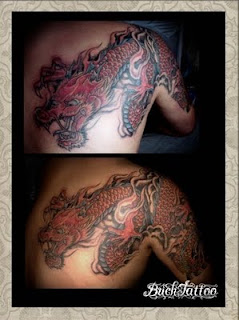
Getting a tattoo is not a recent phenomenon as the practice has existed for thousands of years. Perhaps the most famous archaeological discovery was that of the discovery of the Iceman who had 57 tattoos on his body. Archaeologists estimate that this man lived about 5000 years ago.
Tattooed mummies have also been unearthed in the permafrost of Altai. Tattooing was a prominent part of ancient Chinese culture and paintings that have been discovered from ancient Egypt suggest that tattooing was a part of life in the prehistory of this country.
In ancient times, tattoos were used to mark slaves and criminals. Its use declined in the Western world during the Middle Ages when the practice was condemned by the church.
However, many societies and tribes in North America, Africa and Asia continued to use tattoos as body decoration, a sign of rank, a sign of mourning, as a charm to ward off evil spirits and as part of religious and ceremonial rituals. The tattooing skills achieved by the Japanese and the Maori people of New Zealand had yet to be surpassed.
The practice of having pictures and designs tattooed onto the skin was reintroduced to the West by seamen returning from America in the 16th and 17th centuries. Numerous tattoo establishments set up business in both Europe and the US. Samuel eilly, an American, invented the first electric tattoo machine in 1890. This invention sparked a renewed interest in the art of tattoo.
People became interested in having various pictures and designed drawn and colored on different parts of the body. It was a common practice among sailors who frequently had their arms and chests tattooed with hearts, military insignias and religious symbols.
Henna and Mehndi were and still are the main materials used in making the colors for the tattoo ink in India, North Africa and parts of the Middle East. Copper was commonly used among the Picts of what is now the United Kingdom. In Japan, tattoos were used for various purposes at various times during the country history.
It was used to communicate a person status and was the mark of punishment that criminals were forced to endure to show that had committed an illegal act. By the late 1800 this act was outlawed by the government and those with tattoos were segregated from society.
In the early tattoos of the Middle East, this was a common way of showing that a person was in mourning. A person would deliberately cut themselves and rub ash into the cut to express reverence for the deceased.
In Samoa, the tradition of applying tattoos by had has not changed from early times. Here tattoos are still applied using a tool, called an au, which is a comb made by fastening boar teeth together onto a wooden handle and a portion of a shell. It takes many weeks to complete a tattoo in this manner and it is a very painful process.
Some religions do prohibit the use of tattoos, such as the Hebrew religion and it is specifically mentioned in the King James version of the Bible.
No comments:
Post a Comment